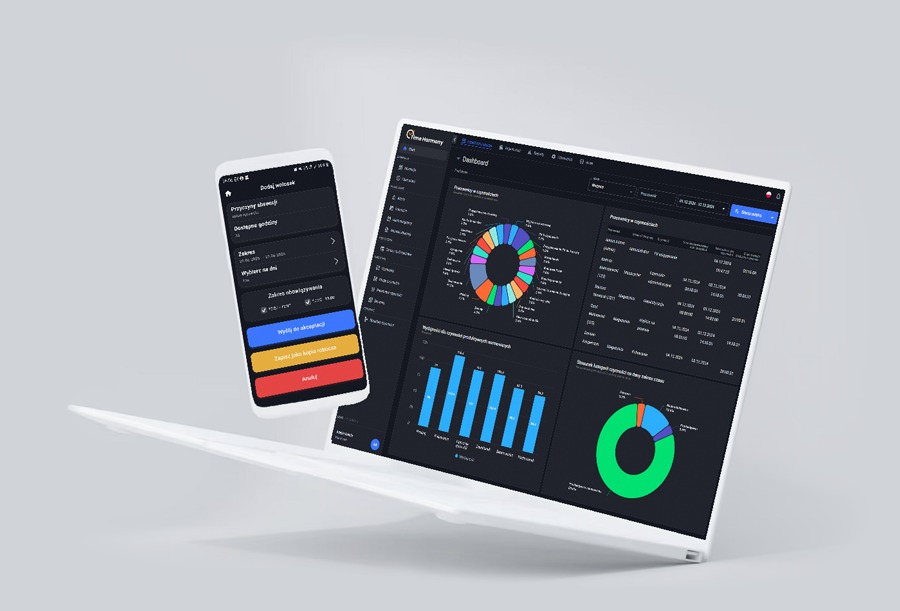Salaries in the warehouse sector in Poland in 2024: trends, challenges and optimization tools.
The warehouse sector in Poland plays a key role in the economy, especially in the context of the dynamic development of e-commerce and logistics. In 2024, the increase in demand for employees and changes in the wage structure were visible across the industry, and according to the latest data, Poland maintained its leading position in the Central and Eastern Europe (CEE) region in terms of salaries in the warehouse and manufacturing sectors.
The trends that shaped the market in 2024 still remain relevant. The competitiveness of salaries and the growing demand for qualified staff continue to affect the development of the sector.
Salary level in 2024
According to data from the National Salary Survey published on the Wynagrodzenia.pl portal, in 2024 the average salary in the warehouse sector in Poland was around PLN 5,500–6,500 gross per month, depending on the position, employee experience and region of the country. The highest wages are recorded in voivodeships with a high density of logistics centres, such as Mazowieckie, Dolnośląskie and Wielkopolskie.
Of course, salaries are higher in managerial positions. Managers of distribution centers can count on salaries in the range of PLN 18,000 to PLN 28,000 gross per month, depending on the region. The highest rates are offered in the Mazowieckie and Wielkopolskie voivodeships. Logistics managers earn between PLN 13,000 and PLN 20,000 gross, with the highest salaries recorded in the Mazowieckie Voivodeship.
Salaries in the warehouse sector. Factors influencing salary growth
The increase in salaries in the warehouse sector in Poland is the result of several key factors. Firstly, the dynamic development of e-commerce and logistics forces employers to offer competitive wages to attract and retain qualified employees. Secondly, the rising cost of living and inflation are prompting companies to regularly adjust rates to the current economic conditions, which directly affects higher salaries in the warehouse sector.
The role of monitoring systems in optimizing work
In the face of rising salaries and increasing competitiveness on the labor market, companies are increasingly implementing modern tools to support efficiency and organization of work. One of such solutions is the Time Harmony system, which allows you to record working time, monitor the activities performed and assess employee performance. As a result, it provides reliable data for analysis, which translates into fair bonuses and greater transparency in the organization.
With Time Harmony, you can:
- Register and plan your team's time online.
- Real-time process monitoring.
- Analysis of employee performance and identification of areas for optimization.
- Elimination of non-value-added activities, which leads to savings and increased efficiency.
Time Harmony works on the basis of online data from dedicated system devices, a web-based employee panel and integration with internal systems (WMS/ERP).
Analysis of working time and activity structure
Dashboards in the Time Harmony system provide quick access to on-line data on the current workflow. Ongoing monitoring of the team's involvement in specific tasks, the duration of individual activities and the level of employee performance are data on the basis of which managers can more effectively plan resources, optimize processes and identify areas for improvement.
Current number of employees in activities
The system enables quick access to data on the percentage of employees participating in specific tasks. Detailed dashboards show what activity is currently being performed by the employee, for how long and with what efficiency.
Participation of employees in standardized and non-standardized activities
The list presents the division of employee involvement in standardized and non-standardized activities – both productive and non-productive. Productive time and idle time are calculated from this.
Measuring non-systemic activities and idle time
Time Harmony allows you to record out-of-system activities that are not included in WMS/ERP systems, but are an indispensable part of operational processes. Such activities include, m.in, tidying up the workplace, organizational meetings, moving between processes, foiling or stacking goods. Our analyses show that they can account for up to 30% of the total working time.

Sample dashboards with employee performance data
Performance over time
The system provides detailed data on employee performance in different time periods – daily, weekly and monthly.
Efficiency in individual activities
The data can be filtered by location, contractor or task type, which allows for a precise analysis of work efficiency.
Top Performance
Quick access to information about the best performance in the team, which makes it easier to identify the most effective employees.
Performance in standardized activities
Monitoring performance for specific activities, which can be assigned norms based on various factors, such as location, customer, or item group.
Nominal capacity
Information about the number of processed units (e.g., items produced) over a specific period of time, e.g., on an hourly basis.
Benefits of implementing the system
The implementation of the Time Harmony system allows for more effective planning and organization of work, which is crucial in the dynamically developing warehouse sector. By providing objective performance data, companies can introduce fair bonus systems and increase the transparency of processes, which has a positive impact on employee motivation and engagement.
Summary - Challenges for the warehouse sector in Poland
The warehouse sector in Poland in 2024 remains one of the most dynamically developing areas of the economy. High salaries, modern technologies and growing investments make this industry attractive to employees and investors.
Salaries in the warehouse sector in Poland remain a key factor affecting the competitiveness of companies and employee motivation. In 2024, wages increased in response to the growing demand for qualified staff and the development of logistics. Current trends indicate that wages in the warehouse sector continue to be at a high level, especially in regions with a high concentration of logistics centres.
The increase in labor costs prompts companies to implement modern tools to optimize operational efficiency. Systems such as Time Harmony allow you to monitor the working time and efficiency of employees, which affects better organization of processes and fair remuneration systems. Automation and data analysis are becoming an indispensable part of the strategy of companies that want to maintain competitiveness while providing attractive working conditions.

Optimize working time and efficiency of your team

